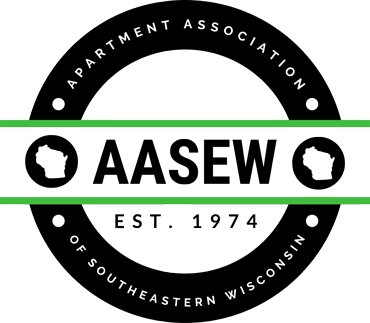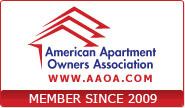Tristan is the Executive Vice President and shareholder with the law firm of Petrie+Pettit and focuses his practice in the area of landlord-tenant law representing landlords and property management companies throughout Wisconsin.
Call us: (414) 276-2850
What May A Wisconsin Landlord Legally Deduct From A Tenant’s Security Deposit?
Posted by Tristan R. Pettit, Esq. in ATCP 134, Security Deposit / Comments
I have received many calls from both landlords and managers over the years asking me if they are legally allowed to deduct X, Y, or Z from a tenant’s security deposit. I fielded such a question just last week – sounds like a good topic for a blog post.
Wisconsin Administrative Code, ATCP 134.06(3) states that a landlord may deduct from a tenant’s security deposit for the following:
1. Damage, waste, or neglect of the unit
2. Unpaid rent
3. Unpaid utilities for which the tenant is responsible
4. Payment for which the tenant owes for direct utility service provided by a government-owned utility (to the extent that the landlord becomes liable for the tenant’s nonpayment)
5. Unpaid mobile home parking fees which a local unit of government has assessed against the tenant (to the extent that the landlord becomes liable for the tenant’s nonpayment), and
6. Other reasons as set forth in a document entitled "Nonstandard Rental Provisions."
For the majority of landlords and managers out there, items #4 and #5 are not often applicable, so I will focus my attention on the remaining items.
If you want to hold a tenant responsible for damage that they caused to your rental unit then you must first demonstrate that the damage was not pre-existing. To do this you should take photos of the entire rental unit prior to a tenant moving in. You should also complete a Check-In form yourself prior to the tenant moving in. Essentially a Check-In form lists the various rooms and areas of the rental unit and provides space for you to note any damage or problems. Once the tenant has moved in you should then provide the tenant with a blank Check-In form and ask them to complete it fully, date it, and sign it and then return it to you promptly.
Upon receipt of the tenant’s completed Check-In form you should compare it to the one that you completed earlier. If there are major differences between the two you should address this immediately with your tenant. Oftentimes the discrepancy will be due to the tenant causing damages during the move-in process.
If the tenant fails to return the Check-In form then a landlord should document this in the tenant’s file. If there is a dispute at a later date, the landlord will now have proof (a contemporaneous document) demonstrating that s/he did provide the tenant with the form and that the tenant, for whatever reason, chose not to complete it.
After your tenant moves out of the unit you should take the time to fully inspect the unit and take photographs of any and all damage, waste, or neglect that you see. Digital cameras (and some of the better phones which include cameras) are great for this purpose. Be sure and use the time/date stamp function if you have it. For those of you that are partial to using a camcorder to record the condition of the rental unit instead of photographs, I would caution you that most commissioners do not have the time or inclination to view a 20 minute tape of you walking around the apartment. Additionally, landlords that I have represented that have opted to videotape the move-out condition of the unit often make inappropriate statements while they are taping which if heard by the judge or commissioner could hamper your case. Furthermore, most courts do not supply the playback equipment needed to view a recording. So unless you want to haul around a VCR and television ("old school") or a digital camcorder and possibly a computer ("new school") - stick to photos.
After the landlord has inspected the unit and taken photos s/he should also complete the Check-Out portion of the Check-In Check-Out form. By doing so, the landlord will now have a "before and after" view of the rental property in one single document to submit as an exhibit in court should it become necessary.
By having photos taken before the tenant moved in, photos taken after the tenant moved out, a Check-In form completed prior to (or immediately after) the tenant moved in, and a Check-Out form completed after the tenant moved out, a landlord should be in pretty good shape to prove any tenant damage, waste, or neglect, if needed.
Do not forget that a landlord is not allowed to deduct for "normal wear and tear." This phrase has never been defined in any Wisconsin statute, administrative rule, or case. Once again, the determination of what is "normal wear and tear" is left to the discretion of the commissioner or judge and may vary from day to day (or even hour to hour - as I have had the misfortune of experiencing)
Unpaid Rent: Deducting unpaid rent from a security deposit would seem pretty straight forward but that is not always the case. Prior to deducting unpaid rent from a tenant’s security deposit a landlord should be sure that s/he can prove what the monthly rent amount is. If you are using a written rental agreement that should do the trick. If you do not have a written rental agreement – a cardinal sin in the rental industry – then you will most likely need to provide proof of your tenant’s rent payment history to demonstrate what the monthly rental amount is.
The issue regarding deductions for rent payments often centers on the determination of when the tenant is no longer responsible for paying rent. This can arise in many different contexts.
One such context would be whether or not the tenant is still responsible for paying rent after they vacate the unit. Another relevant context would be whether or not the tenant is responsible for paying the full rental amount because of the poor condition of the property. Determining whether or not a tenant is responsible for rent in the above contexts (and the myriad of other situations) often depends on a number of factors such as: (1) was the rental agreement a lease for a specific term, (2) did the tenant leave prior to the ending of the term, (2) did the tenant provide the landlord with proper notice of their intent to vacate, (3) was the rental unit uninhabitable, (4) was there sufficient damage to the rental unit such that a tenant could be entitled to "abate" some of the rent, and (5) did the landlord make reasonable efforts re-rent the unit after the tenant vacated.
Unpaid Utilities: This deduction would seem to be fairly straightforward, either the tenant paid their utility bill or they didn’t. But before you make any deduction for utilities from a tenant’s security deposit you should make sure that you have adequate proof to demonstrate that the tenant was responsible for paying the utility. Once again this is where a written rental agreement is a necessity. If you don’t have a rental agreement that clearly states whether or not the utilities are included or not you will often find yourself in a "he said - she said" situation. The person that usually wins that credibility judgment is the party that is the best at lying. Avoid being stuck in such a situation and always use a written rental agreement (even if your tenant is on a month to month tenancy) and always indicate in that rental agreement who is responsible for the utilities.
Another issue that arises with utility fee deductions is whether or not the utility bill became due prior to the 21 day period in which a landlord must either return a tenant’s security deposit or provide the tenant with a written itemization as to how their security deposit was applied. Landlords need to remember that they cannot just hold onto a tenant’s security deposit indefinitely while waiting for the utility bill to arrive. Once your tenant vacates, you will need to contact the applicable utility service and find out what amounts are owed as of that date. Attempt to obtain a written record of this amount if possible. A landlord is not excused form the 21 day requirement under ATCP 134.06(2) just because he or she didn’t yet receive the utility bill for which the tenant is responsible.
Other Reasons as stated in the Nonstandard Rental Provisions: As was mentioned above, if a landlord wishes to be able to legally withhold from a tenant’s security deposit anything other then items 1-5 above, then the landlord must have those additional items set forth in a written NSRP document. There is no such thing as a verbal NSRP. So those landlords that are handling everything verbally - you have limited yourself as to what you may deduct from your tenant’s deposit.
The items in the NSRP should be specifically identified and discussed with the tenant and you must have the tenant either sign or initial the provisions. Examples of items that are often included in a NSRP include: fees for the late payment of rent, the resulting costs to the landlord if a tenant's check is returned for "insufficient funds," any fees charged to the landlord by the local municipality for the tenant's improperly disposing of recyclables, fees for a tenant's failure to permit access to rental unit, the costs to rekey the locks should the tenant fail to return the keys to the unit after vacating, fees for smoking in a non-smoking unit etc. Some landlords charge a flat fee if the tenant fails to clean the stove or refrigerator but other landlords feel that such "liquidated damages" are illegal and if deducted from a tenant's security deposit might open the landlord up for being sued for double damages and atttorney fees. From recent case law it appears that it would be legal to charge a tenant for the actual costs incurred by the landlord for cleaning - at least if the landlord uses an outside company to do the work. The issue of deducting fees for cleaning from a tenat's security deposit is somewhat of a "grey" area so prior to placing such a provision in your NSRP you should consult with your landlord-tenant law attorney.
For those of you that are thinking creatively, I hate to squash your creativity but "no" a landlord may still not deduct for "normal wear and tear" even if there is a specific NSRP saying that such a deduction can be made and it is signed or initialed by the tent.
So that is it - those are the items that a landlord may legally deduct from a tenant's security deposit in Wisconsin.
Two additional notes of caution. First, if you make an improper deduction from a tenant’s security deposit Wisconsin law allow for your tenant to recover double damages and their attorney's fees if they prevail. attorney’s fees. So be careful. Second, security deposits are just that - security. A security deposit should not be treated as an additional source of income - something that a landlord can keep at the end of every tenancy. If you are withholding the entire amount of your tenant’s security deposit after they leave - every time and with every tenant - then it is just a matter of time until you will be sued and have to defend yourself against "double damages" and "attorney’s fees." You do not make money in this industry by keeping your tenant’s security deposits; nor is that the purpose of a security deposit.
To read about a landlord that got burned by not following the above information please go to my January 7, 2010 post.




